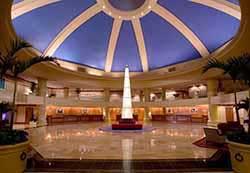Physics Diplomacy, Careers and Research in 15 Different Countries Feature in FIP’s Invited Sessions at the 2017 APS Meetings
Cherrill Spencer
From Argentina to Taiwan, with stops in 13 other countries, from the Early Bronze Age to the future, with stops in tenth century Arabia and medieval Italy along the way, with an Indian entrepreneur, a Russian diplomat, a US economist and yes, quite a few physicist speakers, the seven invited sessions that FIP has organized for the 2017 March and April APS meetings will be interesting, informative and worth your while to attend.
Taking advantage of the so-called April meeting being held in Washington DC in January we will posit that “Physics Improves International Diplomacy”, with the help of a high-ranking Russian diplomat, a science advisor to the US Secretary of State and the Executive Director of International Affairs at the US National Academies. We will also highlight that “Physics Drives Our Economy” with a talk by an economist who has studied the economic effects of hundreds of thousands of foreign STEM students living and studying in the USA and has bust some myths about H1B visas. He will be joined by an Indian physics professor and entrepreneur who will encourage young physicists to take their talents into the commercial world and create new products. “The Roles of Physicists in International and Not-For-Profit Organizations” is a session focused on informing young physicists (and their professors) about careers outside academia. The speakers will be from the United Nations Educational, Scientific and Cultural Organization (UNESCO), the International Atomic Energy Agency (IAEA) and a fellowship program at the National Academies. FIP is co-sponsoring this session with the Forum on Physics and Society.
Our fourth invited session at the “April” meeting (happening from Saturday 28th to Tuesday 31st January 2017) will take us deep underground on three continents as physicists tell us about the facilities and experiments being done at the ANDES deep underground laboratory in a tunnel between Argentina and Chile, the underground laboratory in South Korea and the South Africa Underground Physics laboratory.
Did you know that cosmic ray muons have been used to “see” into the thick walls of Florence’s Il Duomo, looking for structural defects? You can find out about Muon Tomography in our invited session “Physics Tools for Cultural Heritage Investigations” at the March APS meeting. This session will have five speakers who will describe a wide range of physics techniques being used to investigate very ancient and just several centuries old artifacts, to understand if they are deteriorating and develop ways to preserve them if necessary. At our second invited session at the March meeting (13th -17th March 2017, New Orleans, Louisiana) you will find out how accelerator-produced muons are being used to investigate high temperature superconductors, thin films, semiconductors, low temperature magnetism and novel energy materials. Our five invited speakers come from Canada, Israel, Japan, Portugal and Switzerland. They carry out their experiments at ISIS (UK), PSI (Switzerland), RIKEN (Japan) and TRIUMF (Canada).
Our third invited session at the March meeting will introduce four new X-ray light sources to the condensed matter -, bio- and chemical- physicists who attend the March meeting, so that they can evaluate if they could use the X-rays produced by these new machines in their research. The first of the five speakers will give an introduction to the fundamentals of synchrotrons and Free Electron Lasers (FEL) and their resulting radiation characteristics. The other four speakers, all Directors of their institutes, will describe their recently commissioned facilities and how to apply for beam time at: MAXIV (Sweden), Pohang FEL (South Korea), SESAME (Jordan) and the Taiwanese Photon Source (Taiwan). The Division of the Physics of Beams is the unofficial co-sponsor of this session.
As I write this summary the dates and times of these 2017 FIP invited sessions have not yet been set. We will send FIP members an email detailing speaker names, talk titles, session numbers, dates and times when they have been set and I hope you will plan to attend them; they will enhance your knowledge of physics activities and physics careers all around the world.
The Forum on International Physics Program Committee helped me develop the 7 topics covered in our invited sessions and find the 27 invited speakers who will fly in from all corners of the globe to tell us about their work and I thank the committee for their efforts.
Cherrill Spencer, retired from the SLAC National Accelerator Laboratory, is a Magnet Physicist/Engineer, and is our FIP Chair Elect. As FIP Chair Elect Spencer chaired the FIP Program Committee and was responsible for organizing the FIP sponsored sessions at the spring 2017 APS meetings. In 2017 Spencer becomes FIP Chair.
April Meeting 2017 • January 28-31, 2017
Washington, D.C.

March Meeting 2017 • March 13-17, 2017
New Orleans, LA

